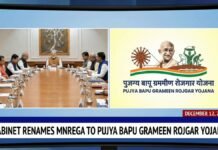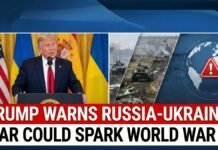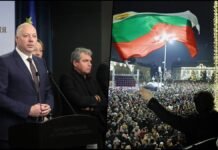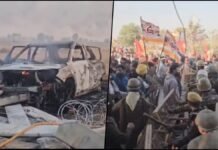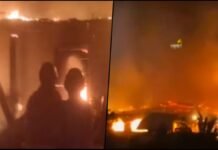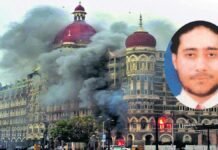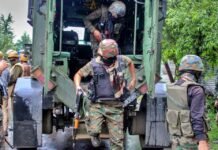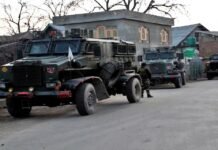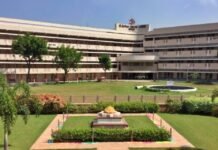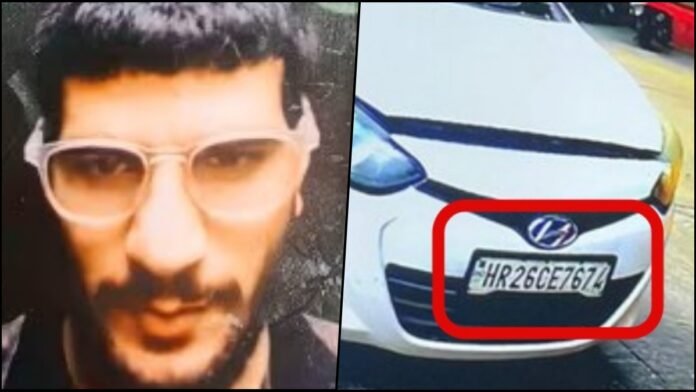
Key Points
- DNA testing confirms Dr. Umar Nabi from Pulwama was the Red Fort blast perpetrator
- 12 killed, 20 injured in November 10 car bombing near iconic Delhi monument
- Terrorist linked to Pakistan-based Jaish-e-Mohammed’s white-collar module
- Handler “UKasa” based in Turkey directed attack via encrypted messaging app
- NIA takes over investigation after government declares it a terrorist attack
New Delhi: In a crucial breakthrough late Wednesday evening, the Delhi Police forensic team confirmed through DNA analysis that Dr. Umar Mohammad Nabi was the individual behind the wheel of the explosive-laden Hyundai i20 that detonated near Red Fort on November 10. The confirmation came after genetic samples from the terrorist’s mother and brother, both residents of Sambura in Pulwama district, showed a 100% match with human remains extracted from the charred vehicle wreckage.
The Delhi Police Special Cell had collected DNA samples from Umar’s family members as part of their intensive investigation. Forensic experts compared these samples against recovered biological evidence, including bone fragments, dental remains, and tissue samples found amid the debris. The conclusive match eliminated any doubt about the bomber’s identity and confirmed that Umar acted as both the driver and the sole occupant during the suicide attack.
Terror Module’s Educated Face
Dr. Umar Nabi represented a disturbing new face of terrorism in India, highly educated professionals radicalized to carry out attacks. Intelligence sources reveal that Umar was a pivotal member of the Faridabad-based “White Collar Terror Module,” a sophisticated network linked to the Pakistan-based Jaish-e-Mohammed (JeM) terror organization. This module specifically recruited educated young Indians from respected professions, including medicine, engineering, and academia.
Investigators discovered that Umar had purchased the white Hyundai i20 used in the bombing just 11 days before the explosion, suggesting premeditated planning. The car served as both transportation and a delivery mechanism for the improvised explosive device that tore through the crowded area near Gate No. 1 of Red Fort Metro Station.
Turkey Connection and Handler Network
A particularly concerning aspect of the investigation involves Umar’s connection to handlers operating from Ankara, Turkey. Digital forensics experts recovered evidence showing Umar maintained regular encrypted communication with his handler, identified only as “UKasa,” through the Session App, a privacy-focused messaging platform that makes surveillance extremely difficult.
Intelligence agencies believe that in March 2022, Umar and several other suspects from the Faridabad module traveled to Ankara for what officials describe as an intensive “brainwashing” and training program. The National Investigation Agency (NIA) has formally reached out to the Turkish Embassy in New Delhi seeking cooperation to verify this international travel and identify the Turkish-based support network. Turkish authorities’ response and cooperation will be crucial in dismantling the broader terror infrastructure.
Bomber’s Final Journey Through Delhi
Extensive CCTV footage analysis reconstructed Umar’s movements on the fateful day, revealing a methodical reconnaissance pattern. The white i20 was first spotted outside Al-Falah University in Faridabad at 7:30 a.m. on November 10. By 8:04 a.m., the vehicle crossed into Delhi territory via the Badarpur border checkpoint.
Over the next several hours, Umar drove through multiple strategic locations, including Okhla, Mayur Vihar, and eventually reached the heart of Central Delhi at Connaught Place’s inner circle by 2:30 p.m. After 3:15 p.m., the car was parked in the parking facility of Sunheri Masjid near Chandni Chowk, where it remained stationary for approximately three hours. At exactly 6:52 p.m., the vehicle exploded on Subhash Marg near the Red Fort Metro Station’s Gate No. 1, killing 12 people instantly and injuring 20 others, several critically.
Government Declares Terrorist Attack, NIA Takes Over
Following an emergency meeting of the Cabinet Committee on Security (CCS) chaired by Prime Minister Narendra Modi, the central government officially classified the Red Fort car blast as a “terrorist attack.” This designation triggered the transfer of the investigation to the National Investigation Agency (NIA), India’s premier counter-terrorism organization.
Sources within the security establishment suggest that Umar detonated himself prematurely, possibly fearing imminent capture by security agencies who were closing in on the Faridabad module. The decision to carry out a suicide bombing may have been taken under pressure from his Turkey-based handlers, who wanted to demonstrate the module’s operational capability before it could be neutralized.
Ongoing Investigation and Security Implications
The confirmation of Dr. Umar Nabi’s role has opened new investigative avenues for security agencies. The NIA is now focused on identifying and apprehending other members of the white-collar terror module, particularly those who may have traveled to Turkey for training. Investigators are also examining Umar’s professional network, educational background, and the radicalization pathway that transformed a medical professional into a suicide bomber.
Security experts warn that the white-collar terror module represents an evolving threat that’s harder to detect than traditional terrorist profiles. These educated operatives can blend seamlessly into society, maintain professional careers as cover, and access resources that typical terror suspects cannot. The incident has prompted a comprehensive review of counter-radicalization programs and monitoring of vulnerable professional communities.


